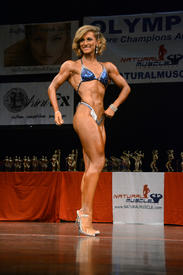Proud to be a snob
Replies
-
Well. How nice for you.
Your food choices don't make you a snob.
Your condescending post does.0 -
I feel like thinking your organic foods are SO much better than "regular foods" that have been feeding the unwashed masses for many moons... makes you a snob.
This post... indicates your a snob.
But eating what you want (no matter what that is) doesn't really make you a snob.
that being said I'm totally a beer snob.0 -
http://www.myfitnesspal.com/topics/show/998983-misconceptions-of-organic-food-s
I doubt the marketing term organic means what you think it does.
Chemicals allowed in organic food:
§ 205.603 Synthetic substances allowed for use in organic livestock production.
In accordance with restrictions specified in this section the following synthetic substances may be used in organic livestock production:
(a) As disinfectants, sanitizer, and medical treatments as applicable.
(1) Alcohols.
(i) Ethanol-disinfectant and sanitizer only, prohibited as a feed additive.
(ii) Isopropanol-disinfectant only.
(2) Aspirin-approved for health care use to reduce inflammation.
(3) Atropine (CAS #-51-55-8)—federal law restricts this drug to use by or on the lawful written or oral order of a licensed veterinarian, in full compliance with the AMDUCA and 21 CFR part 530 of the Food and Drug Administration regulations. Also, for use under 7 CFR part 205, the NOP requires:
(i) Use by or on the lawful written order of a licensed veterinarian; and
(ii) A meat withdrawal period of at least 56 days after administering to livestock intended for slaughter; and a milk discard period of at least 12 days after administering to dairy animals.
(4) Biologics—Vaccines.
(5) Butorphanol (CAS #-42408-82-2)—federal law restricts this drug to use by or on the lawful written or oral order of a licensed veterinarian, in full compliance with the AMDUCA and 21 CFR part 530 of the Food and Drug Administration regulations. Also, for use under 7 CFR part 205, the NOP requires:
(i) Use by or on the lawful written order of a licensed veterinarian; and
(ii) A meat withdrawal period of at least 42 days after administering to livestock intended for slaughter; and a milk discard period of at least 8 days after administering to dairy animals.
(6) Chlorhexidine—Allowed for surgical procedures conducted by a veterinarian. Allowed for use as a teat dip when alternative germicidal agents and/or physical barriers have lost their effectiveness.
(7) Chlorine materials—disinfecting and sanitizing facilities and equipment. Residual chlorine levels in the water shall not exceed the maximum residual disinfectant limit under the Safe Drinking Water Act.
(i) Calcium hypochlorite.
(ii) Chlorine dioxide.
(iii) Sodium hypochlorite.
(8) Electrolytes—without antibiotics.
(9) Flunixin (CAS #-38677-85-9)—in accordance with approved labeling; except that for use under 7 CFR part 205, the NOP requires a withdrawal period of at least two-times that required by the FDA.
(10) Furosemide (CAS #-54-31-9)—in accordance with approved labeling; except that for use under 7 CFR part 205, the NOP requires a withdrawal period of at least two-times that required that required by the FDA.
(11) Glucose.
(12) Glycerine—Allowed as a livestock teat dip, must be produced through the hydrolysis of fats or oils.
(13) Hydrogen peroxide.
(14) Iodine.
(15) Magnesium hydroxide (CAS #-1309-42-8)—federal law restricts this drug to use by or on the lawful written or oral order of a licensed veterinarian, in full compliance with the AMDUCA and 21 CFR part 530 of the Food and Drug Administration regulations. Also, for use under 7 CFR part 205, the NOP requires use by or on the lawful written order of a licensed veterinarian.
(16) Magnesium sulfate.
(17) Oxytocin—use in postparturition therapeutic applications.
(18) Parasiticides—Prohibited in slaughter stock, allowed in emergency treatment for dairy and breeder stock when organic system plan-approved preventive management does not prevent infestation. Milk or milk products from a treated animal cannot be labeled as provided for in subpart D of this part for 90 days following treatment. In breeder stock, treatment cannot occur during the last third of gestation if the progeny will be sold as organic and must not be used during the lactation period for breeding stock.
(i) Fenbendazole (CAS # 43210-67-9)—only for use by or on the lawful written order of a licensed veterinarian.
(ii) Ivermectin (CAS # 70288-86-7).
(iii) Moxidectin (CAS # 113507-06-5)—for control of internal parasites only.
(19) Peroxyacetic/peracetic acid (CAS #-79-21-0)—for sanitizing facility and processing equipment.
(20) Phosphoric acid—allowed as an equipment cleaner, Provided , That, no direct contact with organically managed livestock or land occurs.
(21) Poloxalene (CAS #-9003-11-6)—for use under 7 CFR part 205, the NOP requires that poloxalene only be used for the emergency treatment of bloat.
(22) Tolazoline (CAS #-59-98-3)—federal law restricts this drug to use by or on the lawful written or oral order of a licensed veterinarian, in full compliance with the AMDUCA and 21 CFR part 530 of the Food and Drug Administration regulations. Also, for use under 7 CFR part 205, the NOP requires:
(i) Use by or on the lawful written order of a licensed veterinarian;
(ii) Use only to reverse the effects of sedation and analgesia caused by Xylazine; and
(iii) A meat withdrawal period of at least 8 days after administering to livestock intended for slaughter; and a milk discard period of at least 4 days after administering to dairy animals.
(23) Xylazine (CAS #-7361-61-7)—federal law restricts this drug to use by or on the lawful written or oral order of a licensed veterinarian, in full compliance with the AMDUCA and 21 CFR part 530 of the Food and Drug Administration regulations. Also, for use under 7 CFR part 205, the NOP requires:
(i) Use by or on the lawful written order of a licensed veterinarian;
(ii) The existence of an emergency; and
(iii) A meat withdrawal period of at least 8 days after administering to livestock intended for slaughter; and a milk discard period of at least 4 days after administering to dairy animals.
(b) As topical treatment, external parasiticide or local anesthetic as applicable.
(1) Copper sulfate.
(2) Formic acid (CAS # 64-18-6)—for use as a pesticide solely within honeybee hives.
(3) Iodine.
(4) Lidocaine—as a local anesthetic. Use requires a withdrawal period of 90 days after administering to livestock intended for slaughter and 7 days after administering to dairy animals.
(5) Lime, hydrated—as an external pest control, not permitted to cauterize physical alterations or deodorize animal wastes.
(6) Mineral oil—for topical use and as a lubricant.
(7) Procaine—as a local anesthetic, use requires a withdrawal period of 90 days after administering to livestock intended for slaughter and 7 days after administering to dairy animals.
(8) Sucrose octanoate esters (CAS #s-42922-74-7; 58064-47-4)—in accordance with approved labeling.
(c) As feed supplements—None.
(d) As feed additives.
(1) DL-Methionine, DL-Methionine-hydroxy analog, and DL-Methionine-hydroxy analog calcium (CAS #'s 59-51-8, 583-91-5, 4857-44-7, and 922-50-9)—for use only in organic poultry production at the following maximum levels of synthetic methionine per ton of feed: Laying and broiler chickens—2 pounds; turkeys and all other poultry—3 pounds.
(2) Trace minerals, used for enrichment or fortification when FDA approved.
(3) Vitamins, used for enrichment or fortification when FDA approved.
(e) As synthetic inert ingredients as classified by the Environmental Protection Agency (EPA), for use with nonsynthetic substances or synthetic substances listed in this section and used as an active pesticide ingredient in accordance with any limitations on the use of such substances.
(1) EPA List 4—Inerts of Minimal Concern.
(2) [Reserved]
(f) Excipients, only for use in the manufacture of drugs used to treat organic livestock when the excipient is: Identified by the FDA as Generally Recognized As Safe; Approved by the FDA as a food additive; or Included in the FDA review and approval of a New Animal Drug Application or New Drug Application.
Here's a, partial, list of substances allowed by the USDA to be used on food and still be labeled "Organic", which includes pesticides:
(a) As algicide, disinfectants, and sanitizer, including irrigation system cleaning systems.
(1) Alcohols.
(i) Ethanol.
(ii) Isopropanol.
(2) Chlorine materials—For pre-harvest use, residual chlorine levels in the water in direct crop contact or as water from cleaning irrigation systems applied to soil must not exceed the maximum residual disinfectant limit under the Safe Drinking Water Act, except that chlorine products may be used in edible sprout production according to EPA label directions.
(i) Calcium hypochlorite.
(ii) Chlorine dioxide.
(iii) Sodium hypochlorite.
(3) Copper sulfate—for use as an algicide in aquatic rice systems, is limited to one application per field during any 24-month period. Application rates are limited to those which do not increase baseline soil test values for copper over a timeframe agreed upon by the producer and accredited certifying agent.
(4) Hydrogen peroxide.
(5) Ozone gas—for use as an irrigation system cleaner only.
(6) Peracetic acid—for use in disinfecting equipment, seed, and asexually propagated planting material.
(7) Soap-based algicide/demossers.
(8) Sodium carbonate peroxyhydrate (CAS #-15630-89-4)—Federal law restricts the use of this substance in food crop production to approved food uses identified on the product label.
(b) As herbicides, weed barriers, as applicable.
(1) Herbicides, soap-based—for use in farmstead maintenance (roadways, ditches, right of ways, building perimeters) and ornamental crops.
(2) Mulches.
(i) Newspaper or other recycled paper, without glossy or colored inks.
(ii) Plastic mulch and covers (petroleum-based other than polyvinyl chloride (PVC)).
(c) As compost feedstocks—Newspapers or other recycled paper, without glossy or colored inks.
(d) As animal repellents—Soaps, ammonium—for use as a large animal repellant only, no contact with soil or edible portion of crop.
(e) As insecticides (including acaricides or mite control).
(1) Ammonium carbonate—for use as bait in insect traps only, no direct contact with crop or soil.
(2) Aqueous potassium silicate (CAS #-1312-76-1)—the silica, used in the manufacture of potassium silicate, must be sourced from naturally occurring sand.
(3) Boric acid—structural pest control, no direct contact with organic food or crops.
(4) Copper sulfate—for use as tadpole shrimp control in aquatic rice production, is limited to one application per field during any 24-month period. Application rates are limited to levels which do not increase baseline soil test values for copper over a timeframe agreed upon by the producer and accredited certifying agent.
(5) Elemental sulfur.
(6) Lime sulfur—including calcium polysulfide.
(7) Oils, horticultural—narrow range oils as dormant, suffocating, and summer oils.
(8) Soaps, insecticidal.
(9) Sticky traps/barriers.
(10) Sucrose octanoate esters (CAS #s—42922-74-7; 58064-47-4)—in accordance with approved labeling.
(f) As insect management. Pheromones.
(g) As rodenticides. Vitamin D3 .
(h) As slug or snail bait. Ferric phosphate (CAS # 10045-86-0).
(i) As plant disease control.
(1) Aqueous potassium silicate (CAS #-1312-76-1)—the silica, used in the manufacture of potassium silicate, must be sourced from naturally occurring sand.
(2) Coppers, fixed—copper hydroxide, copper oxide, copper oxychloride, includes products exempted from EPA tolerance, Provided, That, copper-based materials must be used in a manner that minimizes accumulation in the soil and shall not be used as herbicides.
(3) Copper sulfate—Substance must be used in a manner that minimizes accumulation of copper in the soil.
(4) Hydrated lime.
(5) Hydrogen peroxide.
(6) Lime sulfur.
(7) Oils, horticultural, narrow range oils as dormant, suffocating, and summer oils.
(8) Peracetic acid—for use to control fire blight bacteria.
(9) Potassium bicarbonate.
(10) Elemental sulfur.
(11) Streptomycin, for fire blight control in apples and pears only until October 21, 2014.
(12) Tetracycline, for fire blight control in apples and pears only until October 21, 2014.
(j) As plant or soil amendments.
(1) Aquatic plant extracts (other than hydrolyzed)—Extraction process is limited to the use of potassium hydroxide or sodium hydroxide; solvent amount used is limited to that amount necessary for extraction.
(2) Elemental sulfur.
(3) Humic acids—naturally occurring deposits, water and alkali extracts only.
(4) Lignin sulfonate—chelating agent, dust suppressant.
(5) Magnesium sulfate—allowed with a documented soil deficiency.
(6) Micronutrients—not to be used as a defoliant, herbicide, or desiccant. Those made from nitrates or chlorides are not allowed. Soil deficiency must be documented by testing.
(i) Soluble boron products.
(ii) Sulfates, carbonates, oxides, or silicates of zinc, copper, iron, manganese, molybdenum, selenium, and cobalt.
(7) Liquid fish products—can be pH adjusted with sulfuric, citric or phosphoric acid. The amount of acid used shall not exceed the minimum needed to lower the pH to 3.5.
(8) Vitamins, B1 , C, and E.
(9) Sulfurous acid (CAS # 7782-99-2) for on-farm generation of substance utilizing 99% purity elemental sulfur per paragraph (j)(2) of this section.
(k) As plant growth regulators. Ethylene gas—for regulation of pineapple flowering.
(l) As floating agents in postharvest handling.
(1) Lignin sulfonate.
(2) Sodium silicate—for tree fruit and fiber processing.
(m) As synthetic inert ingredients as classified by the Environmental Protection Agency (EPA), for use with nonsynthetic substances or synthetic substances listed in this section and used as an active pesticide ingredient in accordance with any limitations on the use of such substances.
(1) EPA List 4—Inerts of Minimal Concern.
(2) EPA List 3—Inerts of unknown toxicity—for use only in passive pheromone dispensers.
(n) Seed preparations. Hydrogen chloride (CAS # 7647-01-0)—for delinting cotton seed for planting.
(o) As production aids. Microcrystalline cheesewax (CAS #'s 64742-42-3, 8009-03-08, and 8002-74-2)-for use in log grown mushroom production. Must be made without either ethylene-propylene co-polymer or synthetic colors.
http://www.ecfr.gov/cgi-bin/text-idx?c=ecfr&SID=08ed863d93110c01cb0728f8070a052f&rgn=div8&view=text&node=7:3.1.1.9.32.7.354.2&idno=70 -
Damn Snobs & Their Clean Eating
 0
0 -
http://www.myfitnesspal.com/topics/show/998983-misconceptions-of-organic-food-s
I doubt the marketing term organic means what you think it does.
Chemicals allowed in organic food:
§ 205.603 Synthetic substances allowed for use in organic livestock production.
In accordance with restrictions specified in this section the following synthetic substances may be used in organic livestock production:
(a) As disinfectants, sanitizer, and medical treatments as applicable.
(1) Alcohols.
(i) Ethanol-disinfectant and sanitizer only, prohibited as a feed additive.
(ii) Isopropanol-disinfectant only.
(2) Aspirin-approved for health care use to reduce inflammation.
(3) Atropine (CAS #-51-55-8)—federal law restricts this drug to use by or on the lawful written or oral order of a licensed veterinarian, in full compliance with the AMDUCA and 21 CFR part 530 of the Food and Drug Administration regulations. Also, for use under 7 CFR part 205, the NOP requires:
(i) Use by or on the lawful written order of a licensed veterinarian; and
(ii) A meat withdrawal period of at least 56 days after administering to livestock intended for slaughter; and a milk discard period of at least 12 days after administering to dairy animals.
(4) Biologics—Vaccines.
(5) Butorphanol (CAS #-42408-82-2)—federal law restricts this drug to use by or on the lawful written or oral order of a licensed veterinarian, in full compliance with the AMDUCA and 21 CFR part 530 of the Food and Drug Administration regulations. Also, for use under 7 CFR part 205, the NOP requires:
(i) Use by or on the lawful written order of a licensed veterinarian; and
(ii) A meat withdrawal period of at least 42 days after administering to livestock intended for slaughter; and a milk discard period of at least 8 days after administering to dairy animals.
(6) Chlorhexidine—Allowed for surgical procedures conducted by a veterinarian. Allowed for use as a teat dip when alternative germicidal agents and/or physical barriers have lost their effectiveness.
(7) Chlorine materials—disinfecting and sanitizing facilities and equipment. Residual chlorine levels in the water shall not exceed the maximum residual disinfectant limit under the Safe Drinking Water Act.
(i) Calcium hypochlorite.
(ii) Chlorine dioxide.
(iii) Sodium hypochlorite.
(8) Electrolytes—without antibiotics.
(9) Flunixin (CAS #-38677-85-9)—in accordance with approved labeling; except that for use under 7 CFR part 205, the NOP requires a withdrawal period of at least two-times that required by the FDA.
(10) Furosemide (CAS #-54-31-9)—in accordance with approved labeling; except that for use under 7 CFR part 205, the NOP requires a withdrawal period of at least two-times that required that required by the FDA.
(11) Glucose.
(12) Glycerine—Allowed as a livestock teat dip, must be produced through the hydrolysis of fats or oils.
(13) Hydrogen peroxide.
(14) Iodine.
(15) Magnesium hydroxide (CAS #-1309-42-8)—federal law restricts this drug to use by or on the lawful written or oral order of a licensed veterinarian, in full compliance with the AMDUCA and 21 CFR part 530 of the Food and Drug Administration regulations. Also, for use under 7 CFR part 205, the NOP requires use by or on the lawful written order of a licensed veterinarian.
(16) Magnesium sulfate.
(17) Oxytocin—use in postparturition therapeutic applications.
(18) Parasiticides—Prohibited in slaughter stock, allowed in emergency treatment for dairy and breeder stock when organic system plan-approved preventive management does not prevent infestation. Milk or milk products from a treated animal cannot be labeled as provided for in subpart D of this part for 90 days following treatment. In breeder stock, treatment cannot occur during the last third of gestation if the progeny will be sold as organic and must not be used during the lactation period for breeding stock.
(i) Fenbendazole (CAS # 43210-67-9)—only for use by or on the lawful written order of a licensed veterinarian.
(ii) Ivermectin (CAS # 70288-86-7).
(iii) Moxidectin (CAS # 113507-06-5)—for control of internal parasites only.
(19) Peroxyacetic/peracetic acid (CAS #-79-21-0)—for sanitizing facility and processing equipment.
(20) Phosphoric acid—allowed as an equipment cleaner, Provided , That, no direct contact with organically managed livestock or land occurs.
(21) Poloxalene (CAS #-9003-11-6)—for use under 7 CFR part 205, the NOP requires that poloxalene only be used for the emergency treatment of bloat.
(22) Tolazoline (CAS #-59-98-3)—federal law restricts this drug to use by or on the lawful written or oral order of a licensed veterinarian, in full compliance with the AMDUCA and 21 CFR part 530 of the Food and Drug Administration regulations. Also, for use under 7 CFR part 205, the NOP requires:
(i) Use by or on the lawful written order of a licensed veterinarian;
(ii) Use only to reverse the effects of sedation and analgesia caused by Xylazine; and
(iii) A meat withdrawal period of at least 8 days after administering to livestock intended for slaughter; and a milk discard period of at least 4 days after administering to dairy animals.
(23) Xylazine (CAS #-7361-61-7)—federal law restricts this drug to use by or on the lawful written or oral order of a licensed veterinarian, in full compliance with the AMDUCA and 21 CFR part 530 of the Food and Drug Administration regulations. Also, for use under 7 CFR part 205, the NOP requires:
(i) Use by or on the lawful written order of a licensed veterinarian;
(ii) The existence of an emergency; and
(iii) A meat withdrawal period of at least 8 days after administering to livestock intended for slaughter; and a milk discard period of at least 4 days after administering to dairy animals.
(b) As topical treatment, external parasiticide or local anesthetic as applicable.
(1) Copper sulfate.
(2) Formic acid (CAS # 64-18-6)—for use as a pesticide solely within honeybee hives.
(3) Iodine.
(4) Lidocaine—as a local anesthetic. Use requires a withdrawal period of 90 days after administering to livestock intended for slaughter and 7 days after administering to dairy animals.
(5) Lime, hydrated—as an external pest control, not permitted to cauterize physical alterations or deodorize animal wastes.
(6) Mineral oil—for topical use and as a lubricant.
(7) Procaine—as a local anesthetic, use requires a withdrawal period of 90 days after administering to livestock intended for slaughter and 7 days after administering to dairy animals.
(8) Sucrose octanoate esters (CAS #s-42922-74-7; 58064-47-4)—in accordance with approved labeling.
(c) As feed supplements—None.
(d) As feed additives.
(1) DL-Methionine, DL-Methionine-hydroxy analog, and DL-Methionine-hydroxy analog calcium (CAS #'s 59-51-8, 583-91-5, 4857-44-7, and 922-50-9)—for use only in organic poultry production at the following maximum levels of synthetic methionine per ton of feed: Laying and broiler chickens—2 pounds; turkeys and all other poultry—3 pounds.
(2) Trace minerals, used for enrichment or fortification when FDA approved.
(3) Vitamins, used for enrichment or fortification when FDA approved.
(e) As synthetic inert ingredients as classified by the Environmental Protection Agency (EPA), for use with nonsynthetic substances or synthetic substances listed in this section and used as an active pesticide ingredient in accordance with any limitations on the use of such substances.
(1) EPA List 4—Inerts of Minimal Concern.
(2) [Reserved]
(f) Excipients, only for use in the manufacture of drugs used to treat organic livestock when the excipient is: Identified by the FDA as Generally Recognized As Safe; Approved by the FDA as a food additive; or Included in the FDA review and approval of a New Animal Drug Application or New Drug Application.
Here's a, partial, list of substances allowed by the USDA to be used on food and still be labeled "Organic", which includes pesticides:
(a) As algicide, disinfectants, and sanitizer, including irrigation system cleaning systems.
(1) Alcohols.
(i) Ethanol.
(ii) Isopropanol.
(2) Chlorine materials—For pre-harvest use, residual chlorine levels in the water in direct crop contact or as water from cleaning irrigation systems applied to soil must not exceed the maximum residual disinfectant limit under the Safe Drinking Water Act, except that chlorine products may be used in edible sprout production according to EPA label directions.
(i) Calcium hypochlorite.
(ii) Chlorine dioxide.
(iii) Sodium hypochlorite.
(3) Copper sulfate—for use as an algicide in aquatic rice systems, is limited to one application per field during any 24-month period. Application rates are limited to those which do not increase baseline soil test values for copper over a timeframe agreed upon by the producer and accredited certifying agent.
(4) Hydrogen peroxide.
(5) Ozone gas—for use as an irrigation system cleaner only.
(6) Peracetic acid—for use in disinfecting equipment, seed, and asexually propagated planting material.
(7) Soap-based algicide/demossers.
(8) Sodium carbonate peroxyhydrate (CAS #-15630-89-4)—Federal law restricts the use of this substance in food crop production to approved food uses identified on the product label.
(b) As herbicides, weed barriers, as applicable.
(1) Herbicides, soap-based—for use in farmstead maintenance (roadways, ditches, right of ways, building perimeters) and ornamental crops.
(2) Mulches.
(i) Newspaper or other recycled paper, without glossy or colored inks.
(ii) Plastic mulch and covers (petroleum-based other than polyvinyl chloride (PVC)).
(c) As compost feedstocks—Newspapers or other recycled paper, without glossy or colored inks.
(d) As animal repellents—Soaps, ammonium—for use as a large animal repellant only, no contact with soil or edible portion of crop.
(e) As insecticides (including acaricides or mite control).
(1) Ammonium carbonate—for use as bait in insect traps only, no direct contact with crop or soil.
(2) Aqueous potassium silicate (CAS #-1312-76-1)—the silica, used in the manufacture of potassium silicate, must be sourced from naturally occurring sand.
(3) Boric acid—structural pest control, no direct contact with organic food or crops.
(4) Copper sulfate—for use as tadpole shrimp control in aquatic rice production, is limited to one application per field during any 24-month period. Application rates are limited to levels which do not increase baseline soil test values for copper over a timeframe agreed upon by the producer and accredited certifying agent.
(5) Elemental sulfur.
(6) Lime sulfur—including calcium polysulfide.
(7) Oils, horticultural—narrow range oils as dormant, suffocating, and summer oils.
(8) Soaps, insecticidal.
(9) Sticky traps/barriers.
(10) Sucrose octanoate esters (CAS #s—42922-74-7; 58064-47-4)—in accordance with approved labeling.
(f) As insect management. Pheromones.
(g) As rodenticides. Vitamin D3 .
(h) As slug or snail bait. Ferric phosphate (CAS # 10045-86-0).
(i) As plant disease control.
(1) Aqueous potassium silicate (CAS #-1312-76-1)—the silica, used in the manufacture of potassium silicate, must be sourced from naturally occurring sand.
(2) Coppers, fixed—copper hydroxide, copper oxide, copper oxychloride, includes products exempted from EPA tolerance, Provided, That, copper-based materials must be used in a manner that minimizes accumulation in the soil and shall not be used as herbicides.
(3) Copper sulfate—Substance must be used in a manner that minimizes accumulation of copper in the soil.
(4) Hydrated lime.
(5) Hydrogen peroxide.
(6) Lime sulfur.
(7) Oils, horticultural, narrow range oils as dormant, suffocating, and summer oils.
(8) Peracetic acid—for use to control fire blight bacteria.
(9) Potassium bicarbonate.
(10) Elemental sulfur.
(11) Streptomycin, for fire blight control in apples and pears only until October 21, 2014.
(12) Tetracycline, for fire blight control in apples and pears only until October 21, 2014.
(j) As plant or soil amendments.
(1) Aquatic plant extracts (other than hydrolyzed)—Extraction process is limited to the use of potassium hydroxide or sodium hydroxide; solvent amount used is limited to that amount necessary for extraction.
(2) Elemental sulfur.
(3) Humic acids—naturally occurring deposits, water and alkali extracts only.
(4) Lignin sulfonate—chelating agent, dust suppressant.
(5) Magnesium sulfate—allowed with a documented soil deficiency.
(6) Micronutrients—not to be used as a defoliant, herbicide, or desiccant. Those made from nitrates or chlorides are not allowed. Soil deficiency must be documented by testing.
(i) Soluble boron products.
(ii) Sulfates, carbonates, oxides, or silicates of zinc, copper, iron, manganese, molybdenum, selenium, and cobalt.
(7) Liquid fish products—can be pH adjusted with sulfuric, citric or phosphoric acid. The amount of acid used shall not exceed the minimum needed to lower the pH to 3.5.
(8) Vitamins, B1 , C, and E.
(9) Sulfurous acid (CAS # 7782-99-2) for on-farm generation of substance utilizing 99% purity elemental sulfur per paragraph (j)(2) of this section.
(k) As plant growth regulators. Ethylene gas—for regulation of pineapple flowering.
(l) As floating agents in postharvest handling.
(1) Lignin sulfonate.
(2) Sodium silicate—for tree fruit and fiber processing.
(m) As synthetic inert ingredients as classified by the Environmental Protection Agency (EPA), for use with nonsynthetic substances or synthetic substances listed in this section and used as an active pesticide ingredient in accordance with any limitations on the use of such substances.
(1) EPA List 4—Inerts of Minimal Concern.
(2) EPA List 3—Inerts of unknown toxicity—for use only in passive pheromone dispensers.
(n) Seed preparations. Hydrogen chloride (CAS # 7647-01-0)—for delinting cotton seed for planting.
(o) As production aids. Microcrystalline cheesewax (CAS #'s 64742-42-3, 8009-03-08, and 8002-74-2)-for use in log grown mushroom production. Must be made without either ethylene-propylene co-polymer or synthetic colors.
http://www.ecfr.gov/cgi-bin/text-idx?c=ecfr&SID=08ed863d93110c01cb0728f8070a052f&rgn=div8&view=text&node=7:3.1.1.9.32.7.354.2&idno=7
But twinkies are bad for you right? And to agree with others, beer snobery is where its at.0 -
I am a fast-moving dumpster.
Does iceberg lettuce make you feel... tried and robotic?0 -
You guys are freaking insane! I am dying :laugh: here at work. Coworkers giving me the evil eye. :huh: :grumble:0
-
I am a fast-moving dumpster.
Does iceberg lettuce make you feel... tried and robotic?
Nope, it makes me feel hungry.0 -
I am a food snob too. I only eat things that have 3 ingredients listed or less. Natural ingredients.
Like my chicken, it is caned, but the only listed ingredients are Chicken, Water, Salt! Bonn apatite!
OMG that almost made me puke. Still feeling a little nauseated lol0 -
I am a food snob too. I only eat things that have 3 ingredients listed or less. Natural ingredients.
Like my chicken, it is caned, but the only listed ingredients are Chicken, Water, Salt! Bonn apatite!
OMG that almost made me puke. Still feeling a little nauseated lol
I'd destroy it, right out of the can.0 -
Well okey dokey OP. Thanks for letting everyone know you aren't.......I mean you are...0
-
I am a food snob too. I only eat things that have 3 ingredients listed or less. Natural ingredients.
Like my chicken, it is caned, but the only listed ingredients are Chicken, Water, Salt! Bonn apatite!
OMG that almost made me puke. Still feeling a little nauseated lol
I'd destroy it, right out of the can.
3 ingredients or less, it's clean.0 -
I'd destroy it, right out of the can.
I hope you are joking. LOL Look at the pic and look at the chicken. Its still eggshell white and they want us to believe its cooked? You take the first bite.... :laugh:0 -
I don't eat anything with any chemicals because all chemicals are bad.
As a chemist, I feel offended!0 -
I am a food snob too. I only eat things that have 3 ingredients listed or less. Natural ingredients.
Like my chicken, it is caned, but the only listed ingredients are Chicken, Water, Salt! Bonn apatite!
OMG that almost made me puke. Still feeling a little nauseated lol
I'd destroy it, right out of the can.
Apparently it's fully cooked, so you should be good to go.0 -
I am a food snob too. I only eat things that have 3 ingredients listed or less. Natural ingredients.
Like my chicken, it is caned, but the only listed ingredients are Chicken, Water, Salt! Bonn apatite!
OMG that almost made me puke. Still feeling a little nauseated lol
I'd destroy it, right out of the can.
3 ingredients or less, it's clean.
But it's straight outta the womb. That's just too hardcore for me. I'd take a PTICS any day of the week over that canned nightmare XD0 -
It's not the clean eating that makes you a snob. It's the attitude.0
-
How nice for you.0
-
Do you know how you can tell if someone's vegan/has a gluten allergy/eats organic/shops local/does crossfit? Don't worry, they'll f****** tell you!!!
:drinker:0 -
Nice........just wondering if your clean eating is so great why are you still overweight?
Wow. I don't agree with the OP's attitude either, but I never thought you would reply in such a...mean-spirited way. 0
0 -
 0
0 -
Like ALF, I only eat cat.
Am I a snob?
YES! ALF!
I just burst out laughing and everyone in my office is now staring at me. :laugh: Thanks0 -
I am a food snob too. I only eat things that have 3 ingredients listed or less. Natural ingredients.
Like my chicken, it is caned, but the only listed ingredients are Chicken, Water, Salt! Bonn apatite!
:huh: WTF?!!! Somebody shoot it before it gets loose!!!0 -
I guess I'm a snob, too! I'm not a clean eater - I eat what I want, and it's not always clean. And I'm kind of lazy and milling my own flour sounds awful.
But I WAS pretty much raised eating "clean" before it was a thing and it's how I've always leaned and always will. I think McDonalds is disgusting, poptarts are gross, I have no desire to have a bag of chips or a Twinkie or Taco Bell or fruit and veggies that are half rotten from their trip on a truck from South America.
I do like pizza and chocolate chip cookies and Whatburger every once in a while and I make no apologies for that. But I love my organic zucchini and spinach and kale chips and hummus and broccoli WAY more. Actually I love wine the most. In any form.0 -
I am a fast-moving dumpster.
Does iceberg lettuce make you feel... tried and robotic?
blerch0 -
I eat clean and dirty...I'm all about equal opportunity...and sometimes I'm in a hurry and don't quite get all the dirt off my radishes...or I have canned beans instead of spending 1/2 a day making them from scratch.0
-
Glad to meet another beer snob...and pizza snob. I'm a cheese snob too. Annnnd that would be what got me where I am now. My goal is to be less of a cheese and pizza snob. Beer snobbery, however, shall live on.0
-
Oh good for you. You know the site makes blogs for this kind of thing.
There was no reason for a whole post talking about how proud you are of yourself.0 -
wow this is like the tenth tread in about two days on clean eating...
talk about a freaking dead horse...
oh and in...for the oncoming clean vs non clean debate...
Let's just cut to the chase[img][/img]
It's beautiful! Like a double rainbow! What does it mean??? My god...WHAT. DOES. IT. MEAN??????
Lol!0 -
Thank you to those who showed encouragement.
Thank you to those also who posted sarcastic posts because you confirmed what I have seen in these message boards.
As to what is a "natural ingredient" and what is not-- If that ingredient is a food in itself I consider it natural. example- tomatoes, vinegar
If it is not a food in itself I consider it not natural- example - high fructose corn syrup
I have a question - you initially stated that you eat organic, but here you state tomatoes as a natural ingredient. So do you eat any tomatoes or only those stated organic?0
This discussion has been closed.
Categories
- All Categories
- 1.4M Health, Wellness and Goals
- 398.4K Introduce Yourself
- 44.7K Getting Started
- 261K Health and Weight Loss
- 176.4K Food and Nutrition
- 47.7K Recipes
- 233K Fitness and Exercise
- 462 Sleep, Mindfulness and Overall Wellness
- 6.5K Goal: Maintaining Weight
- 8.7K Goal: Gaining Weight and Body Building
- 153.5K Motivation and Support
- 8.4K Challenges
- 1.4K Debate Club
- 96.5K Chit-Chat
- 2.6K Fun and Games
- 4.7K MyFitnessPal Information
- 17 News and Announcements
- 21 MyFitnessPal Academy
- 1.5K Feature Suggestions and Ideas
- 3.2K MyFitnessPal Tech Support Questions



















